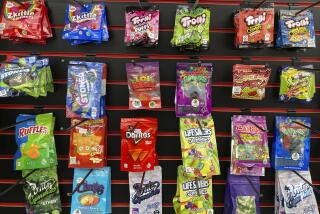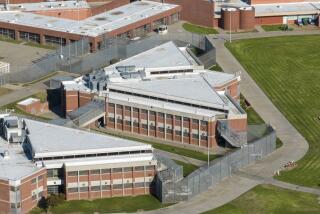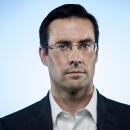4 Teenagers Treated After Taking Drug Linked to Date Rape
- Share via
IRVINE — Four teenagers were rushed to hospitals Saturday afternoon after taking a drug linked with date rape that is posing a growing threat nationwide, authorities said.
Police responded to a request for medical assistance about 12:45 p.m. at the Northwood Town Center shopping mall after the youths drank a liquid drug known by the initials GHB, Irvine police said. The four, who were suffering from extreme fatigue, were treated at local hospitals and released.
The four teenagers, whose names were not released, were not arrested.
“I think they were just experimenting . . . and it knocked them for a loop,” said Candy Lockshaw, the house supervisor at Western Medical Center in Santa Ana, where two of the teenagers, ages 15 and 16, were treated. “We’re seeing this more and more.”
GHB--short for gamma-hydroxybutyrate--acts as a powerful depressant with effects that can last for several hours. The drug depresses the central nervous system, Lockshaw said, and can lead to severe breathing problems. Nationally, there have been several deaths and near-fatal cases.
“All it takes is half a teaspoon to four tablespoons for [users] to be wiped out,” Lockshaw said. “They can go into a coma for a couple of hours on that stuff. We see it a lot.”
GHB is illegal to sell or possess, except for special uses approved by the Food and Drug Administration. Medical researchers are testing it on patients with insomnia.
Odorless and usually clear or slightly yellow in color, GHB can go undetected when mixed with a beverage and has been linked to cases of sexual assault against women. It also is used by some bodybuilders as a synthetic growth hormone.
Recreational use of GHB, also known as Liquid E or Liquid X, is becoming increasingly popular at dance clubs and parties. In small doses, it can induce relaxation and euphoria.
Recently, an over-the-counter drug that converts to GHB after being swallowed has drawn attention from state legislators. Assemblyman Mike Honda (D-San Jose) introduced a bill this year that would ban the sale of the drug, which has been marketed as an aphrodisiac that can burn fat and reduce stress.
As GHB’s popularity has increased, so too have overdoses.
Between 1992 and 1996, the number of GHB-related emergency room visits nationwide increased from 20 to 629, according to the federal government’s Drug Abuse Warning Network. More than 90% of the cases involved taking the drug for recreational use, according to the agency.
More to Read
Sign up for Essential California
The most important California stories and recommendations in your inbox every morning.
You may occasionally receive promotional content from the Los Angeles Times.










